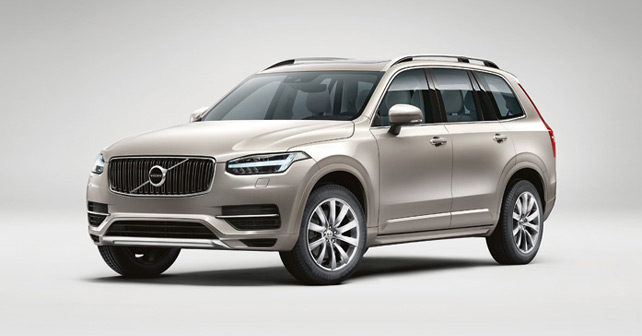Thanks to a platform with an evocative acronym (which stands for Scalable product architecture), and generous investment from the Chinese, the original Swedish SUV is back – and it’s quite ambitious.
Torslanda (a suburb of Gothenburg, Sweden), daytime, Volvo factory, July 11, 2014: XC90 number 636,143 leaves the assembly line to start a very short journey – just a handful of kilometres to the Volvo museum to mark the ‘end’ of a glorious 12-year career (in fact, the SUV will continue to be produced in the home market of Volvo’s owners, China, where it’ll be called the XC Classic).
Paris (France), daytime, Mondial de l’automobile, Volvo stand, October 2, 2014: The second generation of the XC90 is displayed in front of journalists (after the preview at the end of August) and, a few days later, it’s displayed to its potential customers. Now, it’ll face a long journey indeed – as it’ll have to significantly contribute to the achievement of the 800,000 annual sales goal by 2020. With a profitability rate worthy of a premium model – i.e. 8%.
The Volvo XC90 is the first model fully designed after the acquisition of Volvo by Geely in 2010 – which means that it’s the first model in which the name Ford doesn’t appear even on the smallest and most insignificant details.
Four years and $11 billion
Time and money graciously granted by Geely, which has always asserted the need to put the brand in a position to stand on its own two feet, have allowed the development of this modular platform – Spa (Scalable product architecture) that, after the debut of the XC90, will be the basis for all future Volvos. If the flexibility and economies of scale are the industrial advantages, the greater driving enjoyment and ride comfort, resulting from reduced mass and improved weight distribution, is the benefit to the driver. Meanwhile, the passengers in the second and third rows benefit from a more rational use of space. It not only retains the three rows of seats from the model it replaces, but also the desire to demonstrate leadership in terms of sustainability and safety. The latter, moreover, has always been the most distinctive feature of the brand – and to keep it that way they’ve declared that, by the end of the decade, their objective is to ensure that no passengers aboard any of their cars are either killed or seriously injured.
To approach this visionary goal, the XC90 debuts two different systems – safe positioning, which keeps passengers firmly supported in their seats if the car goes off the road, and automatic braking, which mitigates damage in a collision with a vehicle coming from the opposite direction.
The XC90 also intends to hold the title of being the least polluting seven-seater / four-wheel drive vehicle out there – with the Twin Engine hybrid plug-in version boasting a power level of nearly 400bhp, but with CO2 emissions around the 60g/km mark. Meanwhile, all internal combustion engines will be four cylinders, instead of five or six – very efficient, but still powerful.
The Swedish brand hasn’t forgotten, however, that the first principle of choosing a car is its visual impact. And so huge effort has been put in to define the design of the bodywork and the interior. The XC90 is the standard bearer of the new styling of the brand, and the evidence of its desire to win a place in the Olympus of premium manufacturers.
The platform is fundamental
The Scalable product architecture is a modular platform developed for the XC90, as well as for all future Volvo models
Bright signatures
The LED daytime running lights illuminate in the shape of the so-called ‘hammer of Thor’ in honour of Nordic mythology. The tail, instead, is defined by extended and sinuous optical groups. Both these stylistic characterisations will feature on the next generation of Volvo cars
Between leather and wood
The classic materials linked to the idea of luxury are interpreted with Scandinavian minimalism. The console features a long box with sliding lid. The new Spa platform has allowed seven seats to be placed more efficiently
© Riproduzione riservata

























Write your Comment